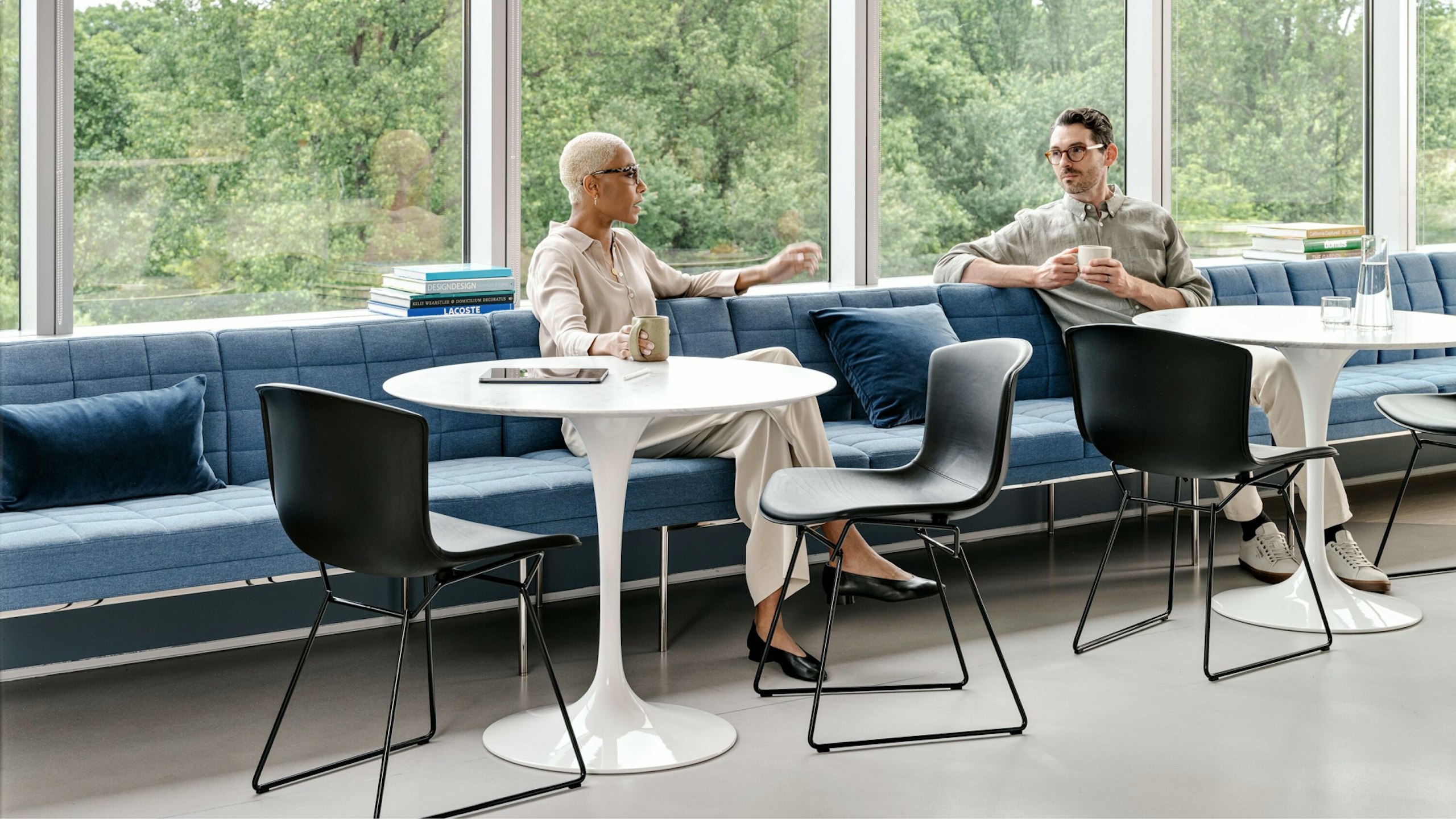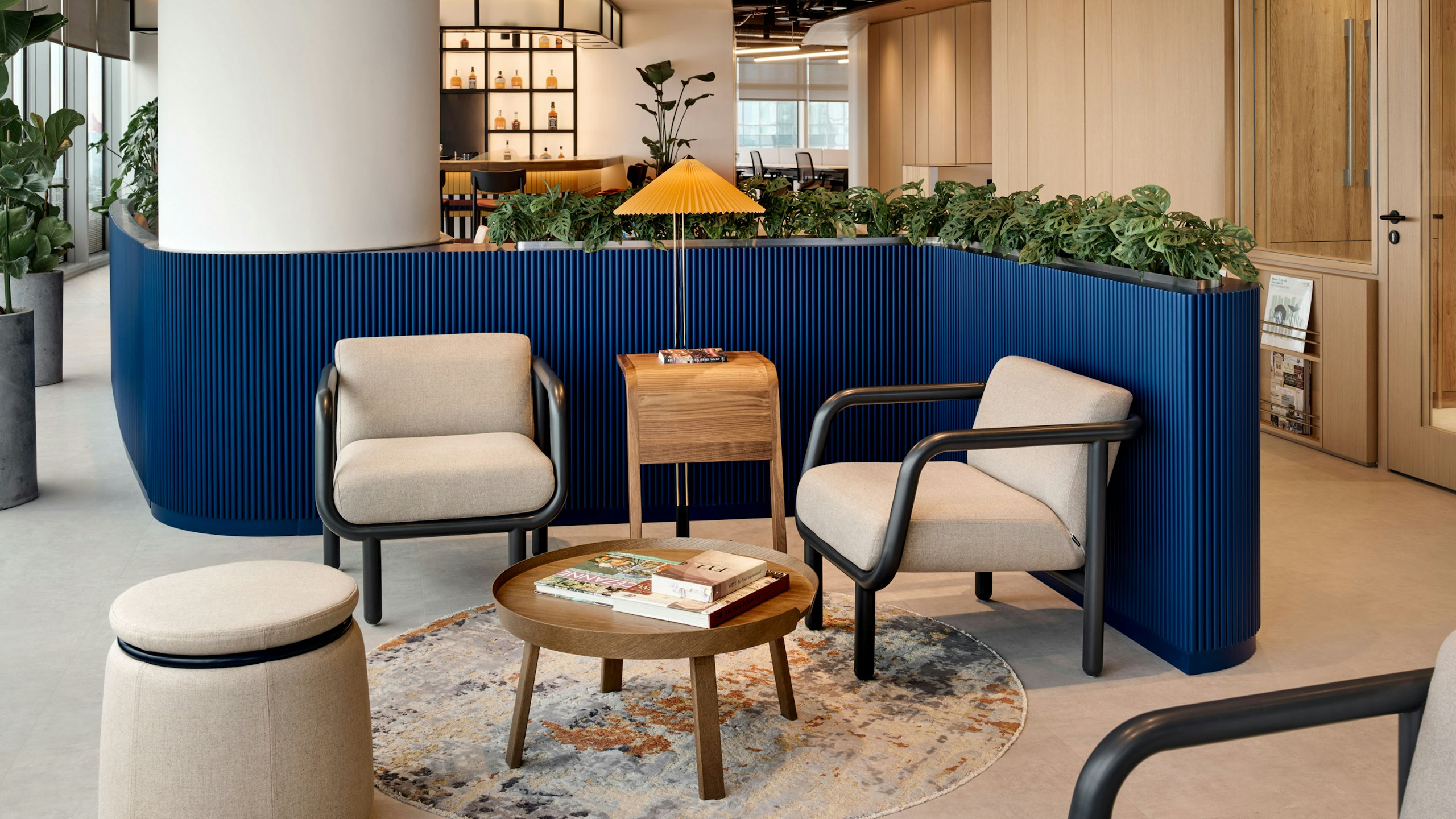The rise of relationship-based work
As more organisations prioritise connection, collaboration and culture in this new era of work, the workplace must take on a new role: To develop and grow relationships.
Sep 6, 2024
3 minutes

The transformation of modern work has been bigger than a technology-enabled, pandemic-fueled race to work-from-anywhere. Today, the value of the workplace is less about how many activities people complete while they're there. It's more about how well the physical space supports the relationships that enable great work.
In 1983, American architect Robert Luchetti co-invented the concept of the office as a series of activity settings.
More than a decade later in his book The Demise of the Office, Dutch workplace consultant and author Erik Veldhoen coined the term "activity based working."
For the following 30 years, these ideas have proven remarkably resilient. In fact, many workplace strategists consider supporting activity-based work leading-edge policy. In this approach, the value people get from their workplace rises or falls depending on how well or how poorly it supports their work activities.
While activity-based work is still a useful model, organisations also need to consider additional inputs to ensure that workplaces support relationships – not just activities.
From the only place to the best place
Today, desk-based workers can complete most of their activities almost anywhere. As a result, the workplace may no longer be the only place where work gets done. However, it can still be the best place for the types of work facilitated by strong interpersonal relationships. Data analysis of the 2024 Workplace Unlimited report, The Enticing Workplace, reveals the most attractive and discouraging factors influencing people's decision to come into the office.
Factors most likely to draw people to the office require spaces designed for interaction:
Teamwork
Socialising
Connection
Two of the three factors most likely to prompt people to work from home require spaces designed for focus:
Travel cost
Concentration
Privacy (e.g. noise control, confidentiality)
The latest scholarship around organisational sociology – including the work of frequent MillerKnoll collaborator Andreas Hoffbauer, Ph.D. – recognises modern work is a collective endeavour. Contributing to business outcomes involves communicating, coordinating, sharing knowledge and making decisions with others. Relationships impact success in all these endeavours regardless of scale, function or level of responsibility.
Workplace planning can either enable or constrain relationship-building. Awareness is the first step. But what does it look like to take the next step and plan a workplace to support relationship-based work?

A matrix of interaction
Rather than creating a series of spaces tailored to certain work activities, a relationship-based work model asks us to consider who needs to be supported and the nature of their interactions.
People cycle through different levels of both purposeful and casual interactions through a given workday. The workplace needs to support all of them.
At MillerKnoll, we think about supporting people at three levels of interaction:
At the community level, interaction happens between or among representatives of two or more groups that have a loose relationship with each other.
At the group level, interaction happens between or among two or more people who have a defined relationship. For example, they might be on the same work team.
At the individual level, interaction is less about connecting with others and more about the wellbeing of each person.

We divide typical workplace interactions into two distinct modes: exchange/reflect and produce. These modes align with the way ideas move throughout an organisation.
The exchange/reflect mode deals with ideas on the fuzzy front end: everything from what an organisation stands for to what they want to achieve long-term – and how to do it.
The produce mode is almost exclusively concerned with ideas that are understood, clear and repeatable.
To understand the difference between exchange/reflect and produce, think about the difference between respite and focus. Individuals might seek out spaces for both activities during a given day, but those spaces likely look very different.
A relationship-based work model asks us to consider who needs to be supported and the nature of their interactions.
The implications for space
Both exchange/reflect and produce activities happen at the community, group, and individual level. This matrix of interaction starts to reveal the complexity of space planning for the modern workplace.
In the past, the vast majority of an office floorplate could be devoted to individual productivity. Wellbeing spaces and lounge areas were nice-to-have add-ons, but they weren't considered core. Today, we see them as part of a bigger picture.
The dynamics of modern work require a much wider array of space types. This includes spaces designed to support community- and group-level interaction and those that accommodate more exchange/reflect activities. Those who plan and design workplaces must acknowledge that, while supporting work activities remains important, supporting the social relationships that enable activities is critical.
To see how this translates into planning ideas for the modern workplace, check out Design with Impact Settings.
3-point recap
While activity-based work remains relevant for many organisations, supporting relationship-based work better reflects the value people and organisations get from the workplace today.
Effective workplace planning involves creating environments that support interactions at individual, group and community levels.
Planning and designing a workplace to support a range of interactions is a proven lever architects and designers can pull to help their clients achieve their desired outcomes.
Hungry for more?
Explore more ways we can help you expand your impact on your organisation and the world.







